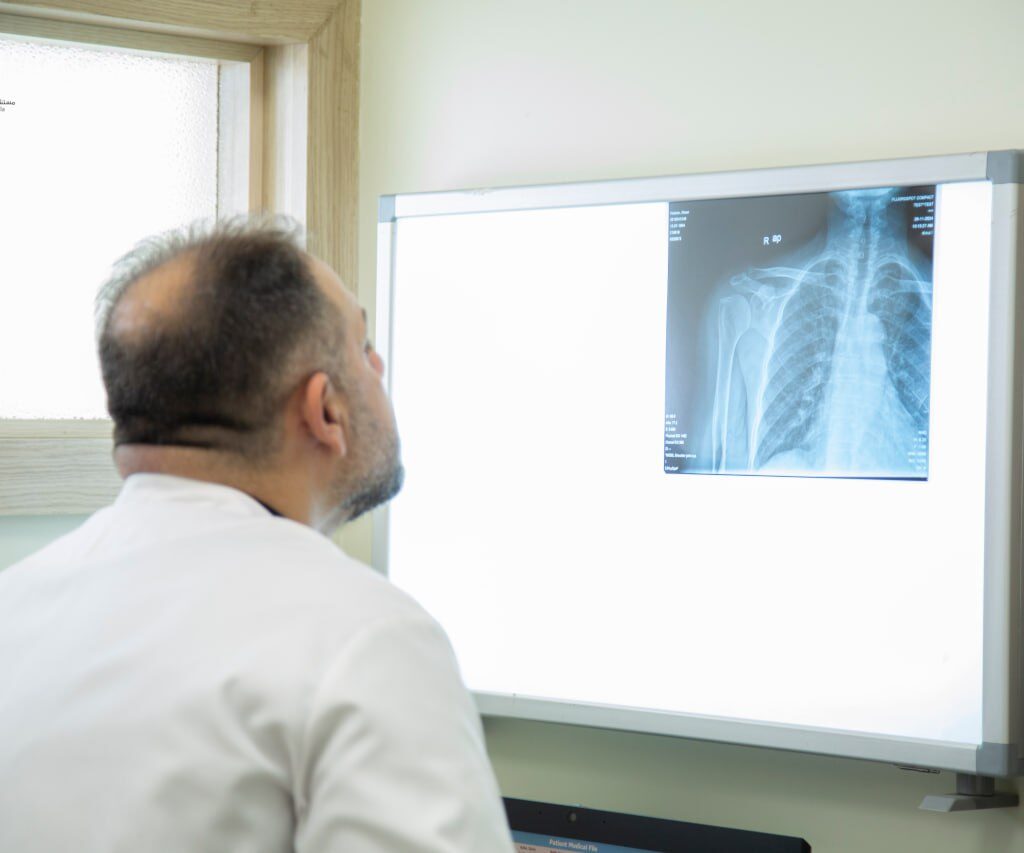Pain is an unpleasant sensory and emotional experience associated with actual or potential tissue damage. Pain is evaluated based on the feeling of the person in pain because pain is a subjective experience that only the person in pain can perceive, and it cannot be felt by others or measured and documented with a specific test or device.
First: Pain can be divided into two types, depending on the length of time it causes a problem for the patient:
Acute pain usually begins suddenly and has a specific cause. It lasts less than 3 – 6 months, and disappears when its causes disappear. When the pain disappears, the person returns to his normal life completely.
Examples of diseases that cause severe pain:
– Bone fractures.
– Burns and wounds.
– Surgeries.
– Dental pains and procedures.
– Childbirth pain.

Chronic pain lasts for more than 6 months, even after the primary cause of the pain has disappeared. Chronic pain may last from months to years, and range from moderate to severe. Therefore, without proper diagnosis and treatment, chronic pain affects the quality of life, and the patient may suffer from depression and anxiety resulting from the continued presence of permanent pain.
Chronic pain is associated with:
– Arthritis.
– Headache (headache).
– Back pain.
– Chronic tissue and muscle pain syndrome.
Chronic pain can be accompanied by a group of different symptoms, which increase the patient’s psychological and physical exhaustion, such as:
– Muscle spasm.
– Limited mobility.
– Loss of energy.
– Changes in appetite.
Second: Pain is divided according to the type and location of sensory receptors into:
It is also called musculoskeletal pain, and is described in the form of sharp pain, pulsating pain, etc., and can be localized in a specific place. Physical pain results from an acute or chronic cause. Superficial physical pain is felt in the skin and mucous membranes, such as pain resulting from mouth ulcers, a skin injury, or skin cancer. The feeling of deep physical pain is in the muscles, bones, joints, and ligaments. Nociceptors in physical pain respond to heat, vibration, tension, and inflammation as well.
Visceral pain receptors are found in the internal organs of the body, such as the intestines, liver, heart, lungs, and others. Visceral pain receptors are particularly responsive to stretch, compression, ischemia and inflammation. It does not respond to cutting or burning. Unlike physical pain, visceral pain cannot be localized to a specific place, as it is not specific in the form of cramps or contractions. The source of the pain can also be in one place and be felt in another place, and this is called transmitted pain. Visceral pain is often accompanied by other symptoms, such as nausea and vomiting, which rarely accompany physical pain.


جميع الحقوق محفوظة لمستشفى الامام الحجة (عج) الخيري © 2023